This diagram shows the rings of Jupiter and Jupiter's innermost moons.
Click on image for full size
Image courtesy of NASA/JPL.
The Rings of Jupiter
You may think Saturn is the only planet with rings. It is not! Jupiter has
rings, too. They aren't as easy to see as Saturn's, but they are there!
Saturns rings are made of ice and are very bright. Jupiter's rings are dark.
They are made of tiny pieces of dust.
Jupiter's rings were discoverd by the Voyager
spacecraft in 1979. The Galileo spacecraft helped us figure out how Jupiter's
rings are made. Meteors that hit some of Jupiter's moons knock dust into orbit
around Jupiter. That dust forms the rings.
Jupiter has three rings. They are called the Halo Ring, the Main Ring, and
the Gossamer Ring.
You might also be interested in:

Have you ever seen a picture of Saturn's rings? If you have ever seen a picture of Saturn, it's likely you saw its rings too! The rings are very pretty and many colors. They circle around the middle of
...more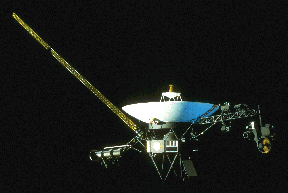
Unexpected discoveries made by the two Voyager spacecrafts during their visits to the four largest planets in our solar system have changed the field of space science. Voyager 2 was launched on Aug. 2
...more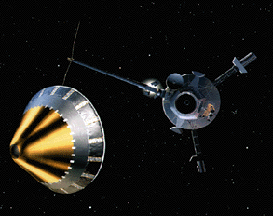
Galileo was a spacecraft that orbited Jupiter for eight years. It made many discoveries about Jupiter and its moons. Galileo was launched in 1989, and reached Jupiter in 1995. The spacecraft had two parts.
...more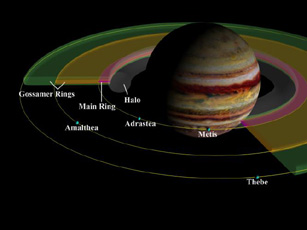
Adrastea is a small moon of Jupiter. Of Jupiter's 60 moons, it is the second closest to the planet. Adrastea was discovered by David Jewitt and Ed Danielson of the Voyager team in 1979. Adrastea is tiny
...more
Galileo is a spacecraft that has been orbiting Jupiter for eight years. On September 21, 2003, Galileo will crash into Jupiter. It will burn up in Jupiter's atmosphere. The crash is not an accident! The
...more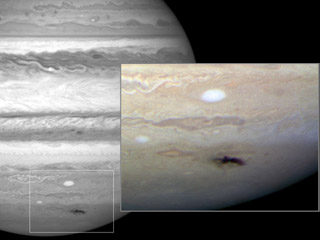
Anthony Wesley is an astronomer in Australia. One night in July 2009, Wesley noticed a dark spot on Jupiter that hadn't been there before. He had discovered the remains of a huge impact on Jupiter! A comet
...more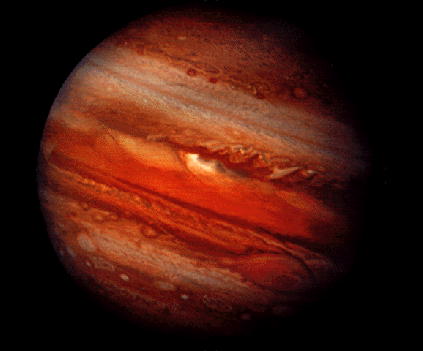
Jupiter is the biggest planet in our solar system! It's also very bright in the sky. We don't know who discovered it, but we do know the ancient Greeks named the planet after the god, Zeus. The United
...more














